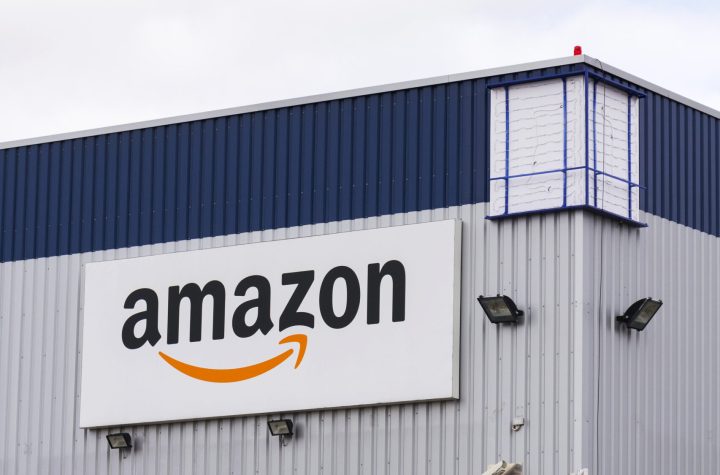
Although the initial adoption of IoT was fairly slow, it has fast become vital to businesses over the last five years. IoT is enabling businesses to increase revenue, create operational efficiencies and deliver new product lines in new markets, our research found. In today’s always-on and fully integrated world, fast and reliable connectivity between all devices is an extremely important business enabler, and those who invest in their IoT strategy are seeing the benefits. It is also a key driver behind digital transformation and holds the keys to allowing businesses to evolve and adapt to modern, digital-first practices. However, there is still a lot that can be done to fully unlock the potential of IoT across almost every industry.
Smart connectivity is the gateway to automation
As the adoption of IoT becomes more widespread, and IoT matures as a technology, traditional implementations of simple networks and connected devices will not be intelligent enough. The beauty of having all of your devices fully connected is that it provides a wealth of real-time data, which enable the system to be more proactive in its response to changing conditions. This does, however, require more processing and analysis on the part of the network, meaning a much more intelligent system is needed.
To fully take advantage of everything that IoT can offer, businesses should implement a ‘smart connectivity’ solution. As an example of this, take a system that monitors the heartbeat of a patient. While this could easily be set up to alert a healthcare professional once the heart rate exceeds a certain limit, this would not allow enough time for a doctor or nurse to respond, depending on the severity of the patient’s condition.
With smart connectivity, this system could be vastly improved. To link the intelligence in the IoT device to the health monitoring analytics and operational dashboards in the cloud, you need intelligent or ‘smart’ connectivity built into the device that enables secure, compliant, and resilient device-to-cloud connection. This would allow the system to be much more proactive, giving it the data and analytics it needs to respond to events before they happen, as opposed to being reactive. In terms of healthcare, the real benefit of this could be saving lives.
There is also a growing need for remote patient monitoring (RPM), which allows patients to be discharged earlier and be safe in the knowledge that highly accurate data about their health will reach their healthcare providers. An excellent example of this being put into practice is Telli Health’s RPM offering, which uses Eseye’s multi-network eSIM connectivity solution, as this is much more reliable than Bluetooth. This reliability is further bolstered by not having to rely on only one network, which also allows for greater geographic coverage for connection.
Keeping up with digital transformation
Organisations strive to take advantage of modern technology as much as possible, in a process dubbed ‘digital transformation’, and IoT is one of the main drivers of this in many industries. One sector that benefits massively from the adoption of IoT is logistics.
Logistics touches every industry that deals with physical goods, and it plays a huge role in the day-to-day activities of most organisations. Due to the highly decentralised nature of the supply chain, IoT technology is a perfect match to solve some of the industry’s biggest challenges.
One main benefit is enhanced visibility and control over the disparate elements that make up the supply chain. A fully integrated network of devices allows companies the ability to monitor their assets, assess risks, and respond quickly to any issues that may arise.
IoT is also a great enabler for automation. Many logistics companies strive for a greater level of self-sufficiency, as it reduces human labour and associated costs, as well as reduces the margin for human error. However, to achieve a high degree of automated processes across the supply chain, it is essential to connect the devices connected to a central network and each other.
The past year has also seen an explosion in the usefulness of AI, and companies want to get as much out of this emerging technology as they can. This is achieved with a robust IoT solution, as it can be used, for example, in warehouses to manage inventory with automatically updating shelves.
Sustainability into the future
Another way in which IoT can help a business excel is in achieving sustainability targets. There is increasing pressure on organisations to become more efficient and decrease waste, as well as reduce harm to the environment. Through a fully connected IoT solution, techniques such as energy harvesting can be employed to extend the lifetimes of devices, as well as optimise energy use to improve overall efficiency.
IoT is essential for the electric vehicle industry, particularly when it comes to EV charging points. This is needed for practically every function of an EV charger, from payment processing and software updates to collecting user analytics. Unreliable connectivity can lead to delays which reduce the efficiency of charge points, limit customer throughput and – perhaps most concerning in a sector where adoption is still at an early stage – dent customer confidence. The technology pioneered through Eseye’s partnership with InstaVolt proves that these issues can be overcome with the right expertise, connectivity and implementation.
Additionally, as electric vehicles become the standard, any charging points that are installed now will need to be future-proof to be ready for the increasing adoption of EVs. The goal, therefore, is to create charging points that can run for 10 years, or more, with minimal human intervention. Having a low-maintenance, durable charging point network is achievable with IoT.
As we move into 2024 and beyond, businesses must embrace IoT if they want to stay ahead of the curve in a fast-paced and ever-evolving world. Choosing the right connectivity partner to provide high-quality service and maximum flexibility will ensure operational resilience and efficiency into the future, regardless of industry. Above all, reshaping industries with IoT can benefit not only the business but also the environment.
The post Practical Applications of IoT in Business appeared first on IoT Business News.



More Stories
Soracom IoT Platform Achieves SOC 2 Type 1 Compliance for Internal Control
Internet of Things in Retail Market Size Will Expand to USD 464.9 Billion by 2031
Essential Partners for Business Expansion: The Impact of Independent Distributors